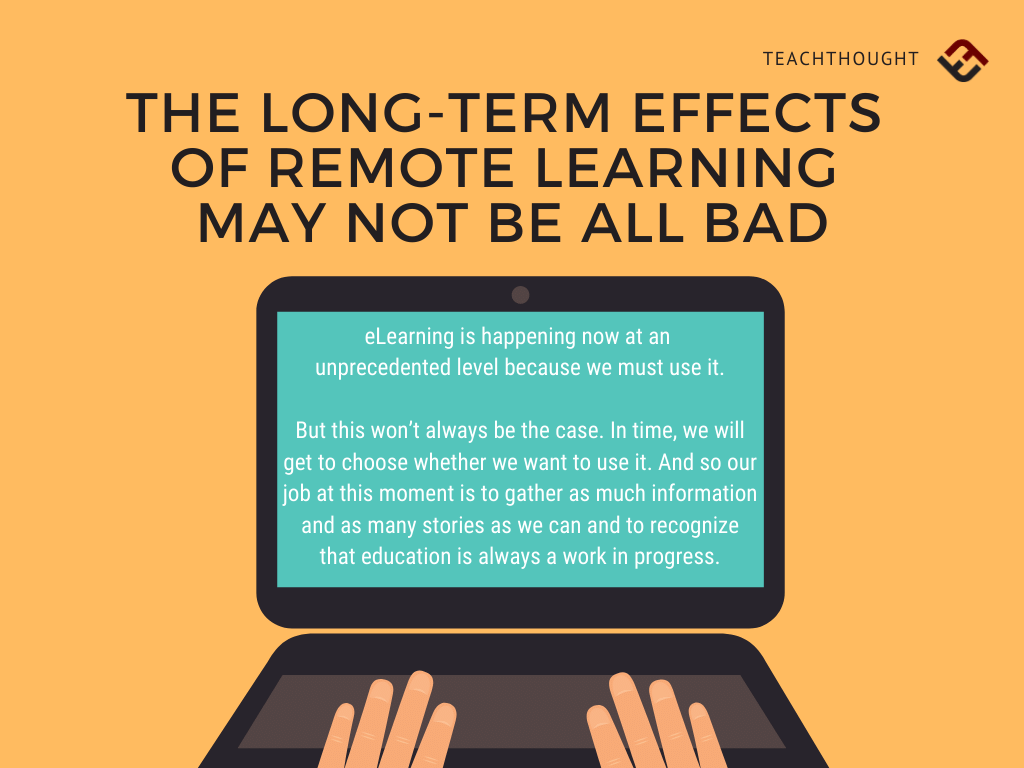
The Long-Term Effects Of Remote Learning May Not Be All Bad, After All
contributed by Mark Siegel, Assistant Headmaster at Delphian School
Because of COVID-19, school cafeterias, gyms, and playgrounds across the country sit silent.
Ungraded papers and textbooks collect dust, and halls that once rang with student laughter are empty. And in the hope that the pandemic does not squash the ability to learn and grow all together, educators are implementing an entirely new style of learning.
Suddenly, home is the new classroom. And instead of using a school bus, students use technologies like laptops, iPads, and digital platforms like Zoom and Schoology to come to their teachers.
On the one hand, this is an ideal time for an educational shift like this to happen. Had it occurred even a decade ago, academic systems might have collapsed under the weight of it all. But today’s children are tech-savvy, and they have an insatiable appetite for entertainment. If parents and teachers can train that appetite to include a diet of educational material, eLearning can feel natural and be effective at the same time.
See also 4 Learning Management System Design Tips For Better eLearning
There’s a potential benefit, too, in that many parents now have a chance to better and more fully understand their children’s education–what they’re being taught and how they’re doing in basic subjects. After going through all this, they might feel more confident taking the reins of education in their children’s lives. And as parents reclaim the role of teacher, at least to a degree, children might look again to their parents for direction and knowledge.
But the shift has real challenges. Few educators were prepared for such a total transformation in such little time. And since it’s tough to be cast into a new setting with unfamiliar material, lots of students bristled at having to view existing instructional videos that didn’t match their current teachers’ methods and teaching styles. And for many parents, adding the title of ‘teacher’ just placed another layer of responsibility and commitment to the mess of managing COVID-19 survival.
We’ve yet to determine the full impact of all of these changes–the good and the bad. We also don’t know for sure how sustainable they truly are, especially when taken in the context of other social systems that have been in place for decades.
What is clear, however, is that students, parents, and educators are being shown alternatives to traditional one-size-fits-all forms of education–different approaches to learning. However, these changes might not work for everyone. For example, some students with disabilities who need more one-on-one assistance might do better if they continue in-person learning. But considering that parents and educators both have argued for years that different children need different things, seeing various forms of eLearning accepted and shoved to the forefront might encourage people to explore every option available to them, including more personalized, proficiency-based education, rather than merely accepting a default.
Ways The Coronavius/COVID-19 Have Indirectly Benefited Education
While making the change has been difficult, there are positives to eLearning, too: embracing it teaches students new and relevant technological skills, helps them learn how to take charge of their own education (since their teacher isn’t there to push them along) and allows them to discover new resources. And, perhaps most importantly, it removes the stress of trying to cram everything into 50-minute classes, allowing students to devote the time they need to an assignment before moving on.
Even if eLearning remains a secondary tool when compared to traditional education strategies, the COVID-19 crisis offers a rare glimpse into how implementing digital education more widely can supplement the work public school educators are already doing. For instance, if more students decide to learn online at home because that genuinely works best for them, teachers could see a drop in classroom size that allows them to provide traditional students with more individualized attention.
Students could also have significantly greater choice when it comes to which teacher or specialist they work with since they could use distance eLearning to connect with any educator in the nation or world. And, eLearning could mean that teachers can provide a greater sense of inclusion and permanence through the school year even for students who must routinely move, such as foster children or those in military families.
Regardless of how everything shakes out, eLearning is our current reality. To make that reality as smooth and easy as possible for everyone, here are a couple of resources that anyone can use while the current pandemic keeps us all at home.
1. The Journal continually updates their list of eLearning tools that companies are providing free of charge while schools are closed which you can find here.
2. The US Department of Education has created a list of home activities provided by various federal agencies, including NASA and the Smithsonian which you can find here.
Conclusion
eLearning is happening now at an unprecedented level because we must use it.
But this won’t always be the case. In time, we will get to choose whether we want to use it. And so our job at this moment is to gather as much information and as many stories as we can and to recognize that education is always a work in progress.
The more diverse the academic system is, the freer and more effective we are, and the better our odds are of truly leaving no student behind.